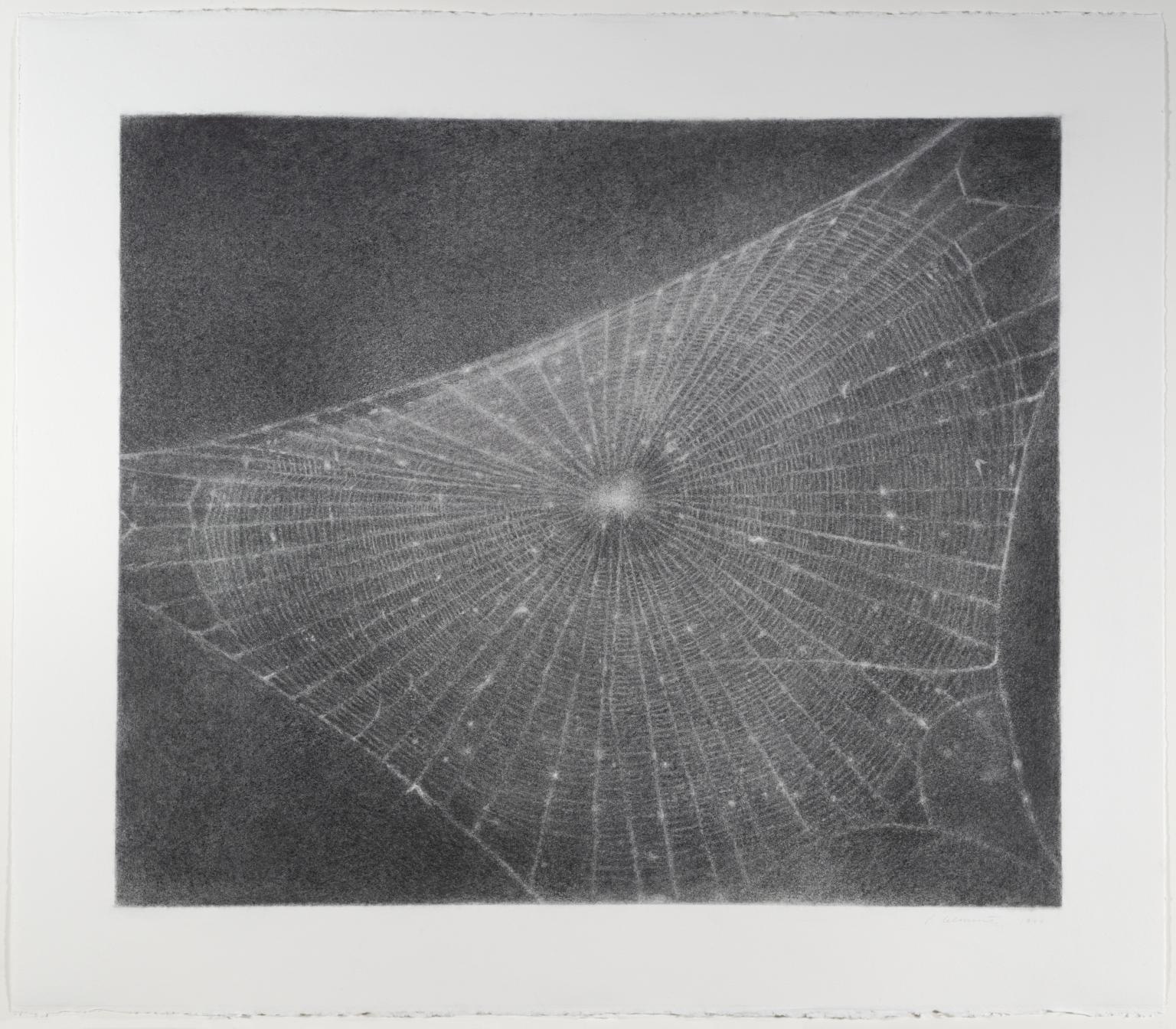Back in May when I was in Spain, I read with interest a long article in El Pais by Antonio Muñoz Molina on the artist Vija Celmins' exhibition then showing at New York's McKee Gallery. The descriptions told of how Celmins works, in her studio, in quiet solitude, communing with objects that she has brought into the studio from walks on the beach or Western deserts, from sidewalk or garage sales in New York or where ever. Her close inspection of the objects then is translated into minutely detailed, intimate paintings and drawings of surfaces, interiors, textures, patterns. Their abstraction and depth, both in tactile effect and message, seem to reach far beyond the mere frames. But always, these images apparently allow for imperfection, as it is first in nature and real life, but more so as she creates her art. The overall effect is powerful and compelling.
Vija Celmins , Web # 1, Charcoal on paper, Image courtesy of Tate / National Galleries of Scotland
Sky, 1975, Vija Celmins, Lithograph on paper, (Image courtesy of the Tate, London)
Her work is very well considered, with awards and exhibitions in major institutions in this country. What interested me was the way she apparently deals with blacks - in paint but especially with graphite. When drawing with graphite, with all its permutations of hardness in the grades of Hs and soft Bs, a lot of skill is need to go on getting a more and more intense black. Unless you are careful, as with pastels, the paper surface gets to such a point of "saturation" that no more graphite will adhere.
What is always fun, when looking at other people's art or reading about it, is to have a sudden idea about something interesting and new to try in one's own art. Thinking about Celmins' work brought back to mind a wonderful goldpoint/platinumpoint drawing I saw in the Telfair Museum of Art metalpoint exhibition, The Luster of Silver, in which I was involved in 2006. Dennis Martin, now sadly deceased, had done the most sensitive and beautiful portrait of his wife. He then surrounded this delicate, almost ethereal three-quarters-size portrait with deep, dark, lustrous graphite. The contrast with the goldpoint drawing was dramatic and most effective.
All these thoughts about artists' skills with graphite are tempting me. Now if the temperatures outside would just diminish a little, I could go off and start doing some drawing plein air!



